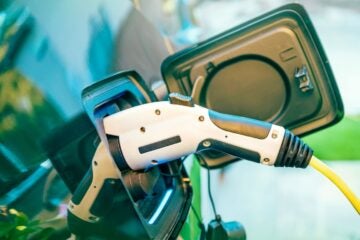This post by Dr. Elena Craft was originally published on EDF’s Texas Clean Air Matters. This is the second in a series of posts evaluating the aftermath of Hurricane Harvey and offering tactics to avoid the worst effects going forward.

The National Hurricane Center in January confirmed what many Texans already knew: Hurricane Harvey’s overwhelming rainfall – and the devastation it left behind – was unlike anything recorded in U.S. history.
Harvey’s rains easily surpassed previous landmark storms, with totals as high as 70 inches in some areas of southeastern Texas.
Yet the historic rainfall total is only part of the Harvey story – the storm also let loose a toxic stew of chemicals and other threats to people’s health. We still do not know the full extent of Harvey’s havoc on health, which will likely have ripple effects for years to come. Texas did not do enough to protect public health this time, but there are ways to minimize the harm before the next storm.
Health threats abound
Harvey swamped oil refineries, chemical plants, Superfund sites and waste treatment plants, fouling air, water, and soil. It also left behind new threats in homes, like mold and bacteria.
The storm’s floodwaters, for example, delivered alarmingly high levels of E. coli, as well as lead, arsenic, and other metals, to the living rooms of a public-housing project along Buffalo Bayou, putting an already vulnerable community at greater risk for long-term health problems.
In Crosby, east of Houston, explosions at a flooded chemical plant triggered an evacuation of nearby residents and sent emergency workers to hospitals. Yet, for all the media attention the Arkema chemical plant episode received, there were 10 larger releases of air pollution because of storm damage, an Environmental Defense Fund (EDF) analysis found.
One of the worst releases – of which we are aware – happened at Valero Energy’s refinery in southeast Houston. After reports of a leaking storage tank at the refinery, city officials detected extremely high concentrations of cancer-causing benzene in the adjacent neighborhood of Manchester, home to some 4,000 people.
EDF on the ground
I know how bad it was because EDF was there. We had dispatched a mobile monitoring unit from a California-based company, Entanglement Technologies, to take air quality samples in Manchester and elsewhere in greater Houston. Between Sept. 4 and Sept. 10, our last day of sampling, we had conducted the largest and most robust active air monitoring campaign of any agency or organization.
The reason? Neither the U.S. Environmental Protection Agency (EPA) nor the Texas Commission on Environmental Quality (TCEQ), the state’s environmental agency, conducted active surveillance fast enough or in the areas most likely to have problems with air quality.
In fact, EPA did not deploy its mobile monitoring unit until Sept. 5 and did not take aerial samples from the Houston Ship Channel until Sept. 7. What’s more, it is unclear whether TCEQ had any of its own active surveillance because the agency has not released any data beyond what its stationary monitors recorded.
Opportunities for improvement
Unfortunately, the Texas Legislature has not given serious attention to environmental risk. Instead, lawmakers have wrangled over air quality dollars and underfunded environmental agencies, severely limiting the ability of those agencies to do their job: keep the public safe and healthy.
Before the next storm, we need to improve TCEQ’s disaster response. We need to be sure that the agency is there when it is needed, doing its job to protect people from exposure to different environmental threats. EDF, along with our allies in the Houston-based One Breath Partnership, believes the state should ensure that TCEQ is fully equipped to respond to pollution events by funding additional staff positions and tools, such as a mobile monitoring unit for full-time use in Houston.
TCEQ should develop a plan for active air quality monitoring and surveillance, with the expectation that the agency deploy mobile sampling equipment during disasters and times of limited coverage from its stationary network.
TCEQ also should share as much information as it can about environmental sampling in real time – even if data are still under review for quality assurance – because the public should know about pollution hazards, especially in times of crisis. Many people spent countless hours working outdoors after Harvey despite concerns about air quality, putting their personal health at risk. It is imperative that people have pollution information in real time in order to take the necessary precautions.
Finally, the agency should refrain from making statements about impacts to public health – or absence of impacts – unless data fully support them.
We can expect storms like Harvey to be more frequent and more intense due to a changing climate. We need state officials to adopt these recommendations to protect people’s health and to prepare for the next disaster, which is likely just around the corner.
Photo source: Lt. Zachary West/Texas National Guard




